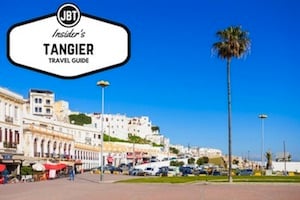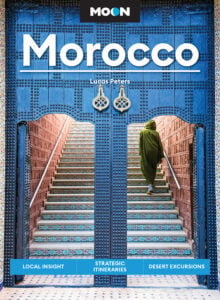 If you travel to Essaouira after visiting other Moroccan cities, one of the first things you might notice in the medina is dreadlocks—several shopkeepers with dreadlocks. The town’s amiable medina, well-kept beach and quiet serenity make Essaouira an attractive place to get away.
If you travel to Essaouira after visiting other Moroccan cities, one of the first things you might notice in the medina is dreadlocks—several shopkeepers with dreadlocks. The town’s amiable medina, well-kept beach and quiet serenity make Essaouira an attractive place to get away.
Beyond the dreads, the medina, a UNESCO World Heritage site, has a uniquely relaxed ambiance. Rather than calling passers-by into their shops, merchants tend to quietly observe the crowd or mingle with locals, leaving tourists to browse through handmade Berber baskets, colorful fabrics and artisan handicrafts relatively pressure-free. Even negotiating for goods feels low-key, but don’t let down your guard when buying—Moroccan bargaining customs still apply!
Exiting the medina through the harbor-side door reveals Essaouira’s “sleepy fishing village” character. Go in the morning to see fishermen at work, inhale the wafting scent of sardines and survey the swooping seagulls hoping to nab their share of the morning’s catch. The port quiets later in the day, offering picturesque rows of blue fishing boats bouncing on the waves with swarms of gulls overhead.
A main attraction for Moroccan and international tourists is the beach. Local officials appear to be keenly aware of this, considering the lack of litter and abundance of evening lighting along the approximately two kilometers of coastline that attract the most activity.
Very few restaurants operate along the beach, leaving plenty of open space to lounge, play or wander. However, if you get a hankering for a snack, a guy selling cookies out of a tray-like, plastic wrap-covered box is never very far away.
Wind whirls through the entire town—even the wide alleyways of the walled medina—earning Essaouira its nickname of Morocco’s windy city and making it a popular place to kitesurf and windsurf. Some local riads offer lessons for both.
By night, the promenade along the beach comes to life. And while there’s still plenty of traditional Moroccan dress, you’ll likely see more western-style clothes and fewer hijabs (the head scarf traditionally worn by Muslim women) than in many other parts of the country.
In late June, Essaouira hosts the Gnaoua Festival of World Music. This four-day “Moroccan Woodstock” features gnaoua music (the Gnawa are an ethnic group descended from the country’s neighbor to the south, Mauritania) and includes reggae, jazz and other genres. As many as 450,000 music lovers flood the small city to attend. The event is a source of pride among locals, as evidenced by framed posters from past years in venues throughout town.
Written by Shelley A. Gable, instructional designer and freelance writer.
Photo by Robbie’s Photo Art.








